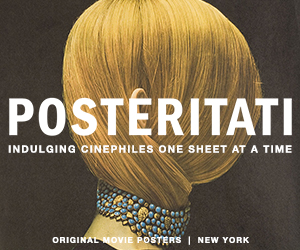Something of a 1980s riff on 1960s biker exploitation pictures, The Loveless stars Willem Dafoe, in his first major role, as Vance, leader of a roving gang that gets stuck in a seedy Florida backwater when one of their bikes breaks down. The movie is a strange bird, purposely so.
Kathryn Bigelow and Monty Montgomery share directorial and screenwriting credits; it was her feature debut and the only thing Montgomery directed. The Loveless operates not as homage or even spoof, really, but somewhere in that strangely sincere place in between—the cinematic dreamspace that would come to be defined by the work of David Lynch. Indeed, The Loveless may have been formative for Lynch, who had only made Eraserhead and The Elephant Man before this was released in 1981 (Blue Velvet came out in 1986). After The Loveless, Montgomery would go on to have producer roles on Wild at Heart and Twin Peaks for Lynch, both of which resemble The Loveless in distinct ways: the self-aware lingo (everyone is either “Momma,” “Daddy,” “Boy,” or some variation); the purposefully flat performances (although Dafoe pops as a dangerous talent); the small-town setting populated by venal locals who are more corrupt than the supposedly amoral bikers.
Despite such compelling connections, it would be unwise to overlook Bigelow, particularly because her eye—which we’d come to know from the likes of Near Dark, Point Break, and The Hurt Locker—surely accounts for the fact that there is hardly an uninteresting frame in the movie. From its ambitious opening image—pulling back from a close-up on Vance’s boots to an overhead crane shot of him purring out onto a blank highway—to the striptease performance given by a sad waitress (Elizabeth Gans) in an eerily green lounge, The Loveless has a camera that’s curious about underbelly imagery—and the psychic pull such things can have on us.
(10/14/2025)



